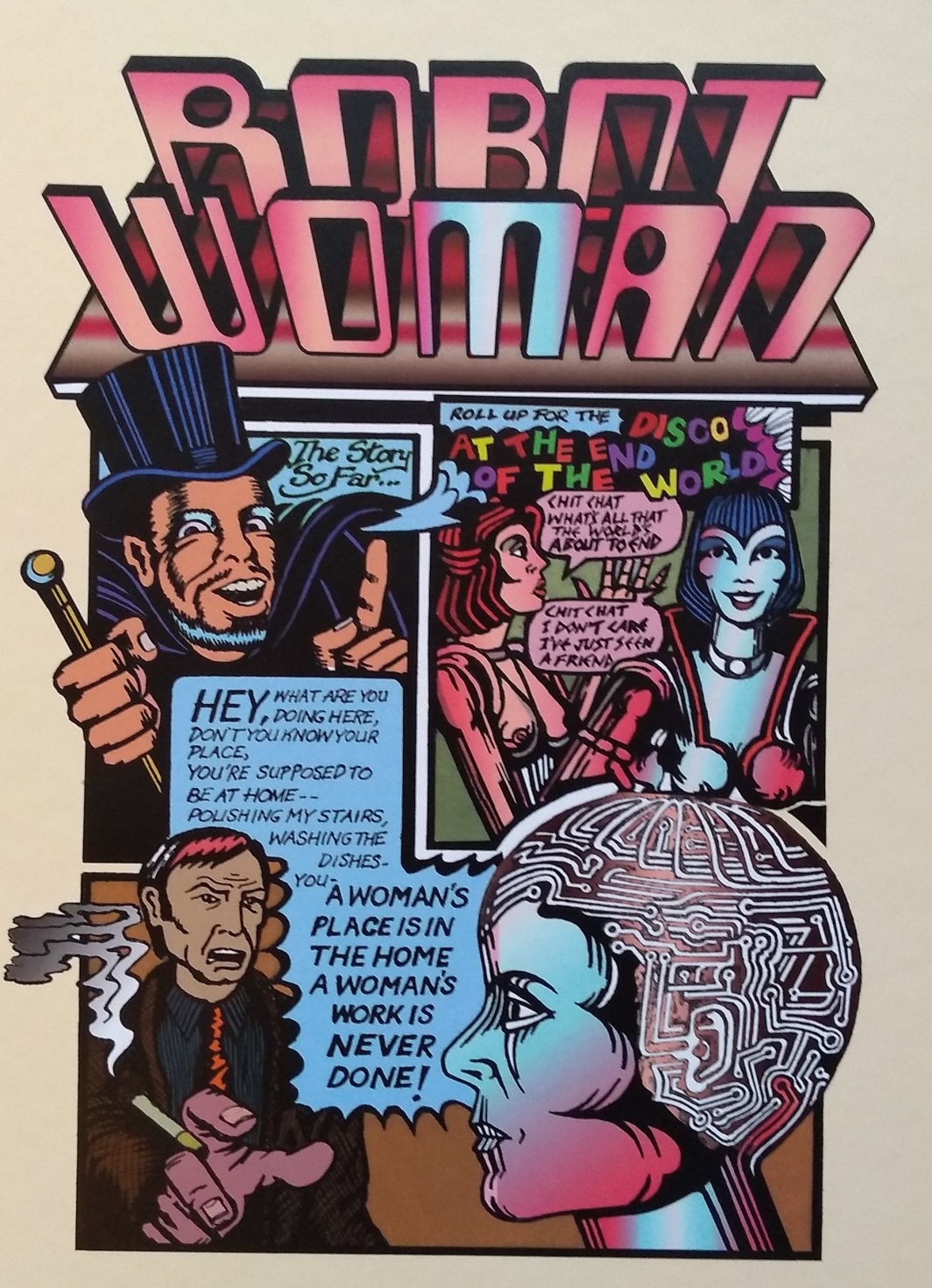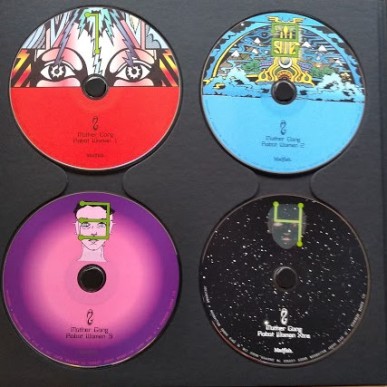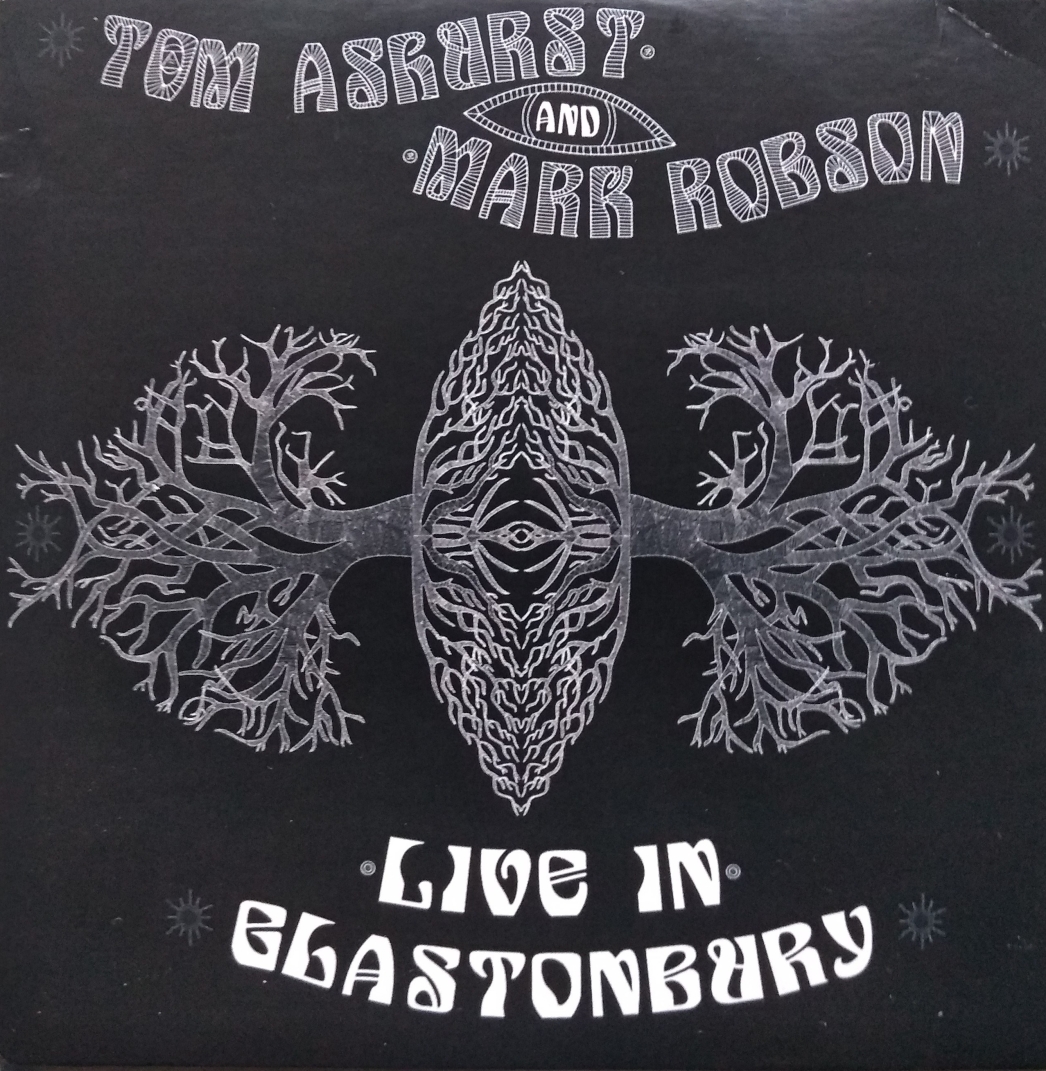
This lavishly illustrated and lovingly curated box set is a wonderful testament to a brief passage in time in the early 1980s when Mother Gong, the project based around Gilli Smyth and partner Harry Williamson, put forward their own unique slant on the Gong vibe in the form of a trilogy of ‘Robot Woman’ albums. I remember picking up all 3 albums in the late Eighties as they seemed to crop up, new, with corners punched out of them in various vinyl bargain bins. In fact this is the first appearance of any of them on CD, released by Madfish, a subsidiary of Snapper, who are responsible for both the Steve Hillage box set and the forthcoming ones by Gong and Caravan. This box set includes all 3 albums, carefully remastered and augmented by a fourth, containing a series of bonus tracks which add musical and historical context to the whole project.
On my first listening to this music back in the day I succumbed to the temptation to carry out a musical comparison with Gong themselves (that band were dormant at the time, and this appeared to be the nearest thing) but this isn’t perhaps the most helpful starting point. Harry Williamson, who composed most of the band’s music, is a very much a different kettle of fish to Daevid Allen and whilst their paths (and Gilli’s) crossed many times over subsequent years, producing memorable reflective work such as ‘Magenta’, ‘Stroking the Tail of the Bird’ and ‘22 Meanings’, ‘Robot Woman’ was always much more musically abrasive, whilst providing a carefully crafted backdrop for Gilli Smyth’s lyrics in a way that Gong themselves could only do sporadically.

All of the albums are ultimately performance art, but none more so than ‘Robot Woman 1’ with all of its sharp characterisation, the music providing a busy backdrop to a story which on the surface appears to herald the advent of computerisation and automation, but ultimately is a cleverly interweaved commentary on the perception and objectivisation of women in a male-dominated world. Whilst at times the caricatures are extreme enough to make one wince (for example ‘Customs Man – Rapist’), ultimately these are richly entertaining pastiches of musical styles, with the narrative the most important element. That said, the musically the backdrop is expertly performed, with my favourite moments being Williamson’s slick funk guitar licks, particularly on ‘Disco At The End Of The World’ and ‘Machine Song’, the latter of which has you checking yourself for perspective as Gilli Smyth puts in one of her more erotic vocal performances (whilst describing the tangle of wires inside her robot persona and breathily announcing ‘I need your screwdriver…’) . Hugh Hopper guests on two tracks here, including the truly strange ‘Stars’, whilst Mike Howlett, Steve Hillage and Steve Broughton all get credits on ‘Machine Song’ as some of the music emanates from ‘Digital Love’, the original B-side to ‘Nuclear Waste’ from Sting and the Radioactors, which I believe was Harry’s first involvement with anyone from the Gong crowd in 1977.
Despite the fact that two of my all-time favourite musicians, Didier Malherbe and Van der Graaf’s Guy Evans form part of the core ‘band’ on ‘Robot Woman 1’ (alongside young Devonian bass player Dayne Cranenburg), their individual voices are subsumed into a seamless overall machine which propels the story along. But by ‘Robot Woman 2’ on which both musicians appear again throughout, the music is starting to find a voice too. I was surprised, hearing this album for the first time in 20 odd years, how familiar it was, testament to some heavy duty listening back then and its strength as an album. The composition is already freeing up with Didier’s interjections much more recognisably his – ‘You Can Touch The Sky’ is almost an outtake from ‘Melodic Destiny’ the lost album with Yan Emeric recorded around this time here, whilst two tracks which were still Mother Gong staples in the Nineties, ‘1999’ and ‘Crazy Town’ take their first bow. Harry Williamson’s songwriting is much more effective, and includes roles for harmonised vocals – with the addition of a female voice or two singing conventionally to augment Gilli Smyth’s patent poetry. This is musically more successful than the first album, although it takes some delving into the liner notes to find the narrative in a way that wasn’t necessary with the first album.

By album 3 the band were moving towards the formula which would characterise the classic ‘Wild Child’ era: lengthier compositions and individually musically more diverse yet coherent pieces, although one could be forgiven on hearing early parts of the opening track ‘It’s You And Me Baby’ that we have landed directly into some sort of Eighties caricature, with drum machines, stuttering voice samples a la ‘n n Nineteen’ and abrasive keyboard interjections. Highlights for me are the slightly unnerving drone piece ‘Faces of Woman’ very much suited to the Gilli Smyth voice with glissando backdrop (from Daevid Allen) , a further hint to the way forward, whilst ‘Lady’s Song’ is an almost Kevin Ayers-like cod-calypso number, superbly realised and forming the backdrop to the Smyth voice categorising the roles of women in their many guises. I’d also completely forgotten that the first part of ‘Magenta’, the glorious meditative piece also powered by a Daevid Allen glissando drone (which reached its 30 minute realisation in a later Mother Gong release) started here – Gilli’s words here are powerful and evocative.
The bonus fourth CD is something of a delight – a selection of 18 tracks mainly from various stages of the trilogy, but concentrating most particularly on early material. Track 1, ‘Evidance’, is identified as being a tune which the band used as a soundcheck/intro for early Robot Woman gigs, but in fact appears to be taken directly from the aforementioned ‘Melodic Destinies’, which I bought as a cassette from GAS in the late Eighties, an unfulfilled follow up to ‘Bloom’ from Didier. This superb track was by the far the highlight of that release. There are early versions of ‘Disco at the End of the World’, which actually uses ‘Moving Walkway’ from ‘Robot Woman 2’ as its backdrop, complete with the superb synth solo from Mo Vickerage; and ‘Machine Song’. Both, in waiting to settle down for their final versions contain some really interesting variations, as do the dub versions (as in its instrumental sense but also as an indication of its reggae feel) of ‘Australia’ and ‘1999’, the latter almost like Here and Now in its ska leanings. There are voiceover tryouts from Harry Williamson, two tracks featuring the vocals of Tasmin Smyth, Gilli’s first daughter, something of a forgotten entity in the whole Gong story; and two outstanding instrumental tracks unrelated to the Robot Woman story but based around the glissando guitar of Harry Williamson, the first a superb duo with Didier Malherbe called ‘Flying Through The Machine’, the second ‘Gliss’ with violinist Matthew Arnold. Elsewhere certain outtakes from ‘Robot Woman 1’ feature more prominent vocal involvement from Gilli’s (and Daevid’s) sons Taliesin and Orlando and Harry’s daughter Bee, which adds a certain anarchic charm. Finally we hear the closing part of the ‘Magenta’ poem, which has been cleverly superimposed over a track I recognised from Harry Williamson’s duo cassette with Robert Calvert (the saxophonist from later Mother Gong) ‘Street Art’ – which is hugely resonant. This section, in which Gilli as narrator reflects on life as a 100 year old, includes a certain amount of resolution in terms of the whole narrative, squaring the circle, solving life’s conundrums etc which gives a rather positive conclusion to the whole Robot Woman story perhaps.

And so to the packaging – which is, in addition to the bonus tracks and the release of all 3 albums on CD for the first time, the primary reason you might buy this box set. An LP-sized 64-page book blends together numerous things: all of the original artwork, including for the first time coloured versions of the first album’s cartoons by Pete Woolley; a full set of track listings and musicians; a comprehensive publishing of all the lyrics; plus a biography and thoughts by Harry Williamson on the origins of the band plus a personal chronology of its development up until the end of the trilogy period. This includes the fascinating story of the original spark for the project at the Bananamoon Observatory on Es Clot in Deia, through to communal living in the Devonian outback which spawned a number of related projects (The Long Hello and the aforementioned ‘Melodic Destiny’) and eventually to emigration to Australia. There is a eulogy from Rick Chafen, personal friend and architect of the US gigging network which gave a platform for the band in the Nineties; and artefacts including gig posters and ticket; and a rather moving and erudite poem written by Gilli Smyth following the death of Harry Williamson’s father Henry (author of Tarka the Otter, a book which son Harry would later set to music). This is all in all, a wonderfully presented artefact for a somewhat forgotten piece of history and a lovely tribute from Harry Williamson to Gilli Smyth and the music they created together.
Buy the Mother Gong trilogy box set from http://www.planetgong.co.uk









